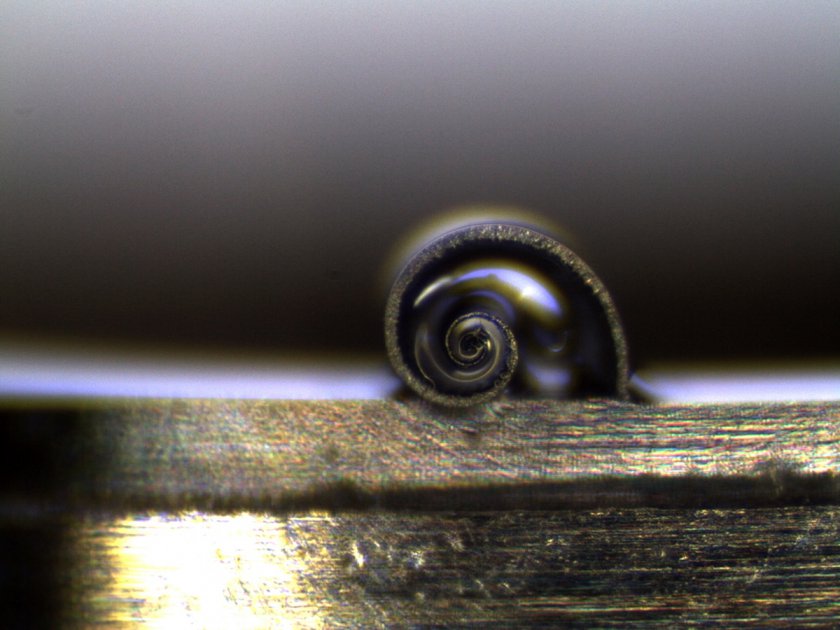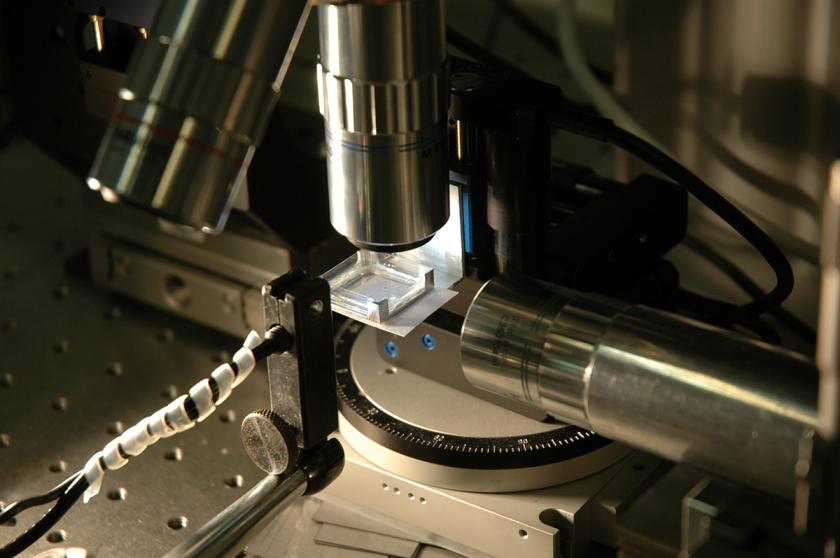At the heart of SUPMICROTECH-ENSMM
Four of the FEMTO-ST Institute’s seven research departments are located on SUPMICROTECH-ENSMM premises (AS2M, DMA, TF, MN2S), or in the immediate vicinity. The teaching-research staff take an active part in the research works, notably in the mechanics and physics of materials and surfaces, structures and processes, in automation, in time-frequency electronics and in micro- and nanosystems and technologies, making significant contributions to technological and scientific innovation.
The departments
Automation and micro-mechanics systems (AS2M)
Two major subjects
The AS2M department’s works are based on the automation, robotics, mechatronics disciplines. Its scientific activity is marked by the desire to create systems regarding two major challenges. First, the investigation and instrumentation of micro- and nanoworlds, making it possible to intervene in them by means of smart and robotic systems. Then, the development of the operating security of complex systems through failure monitoring, diagnosis and prognostics.
Concrete applications
These two key challenges correspond to expanding fields of application :
- The manufacturing industry : handling, assembling, packaging for micro- and nanotechnologies, operating security and preventive maintenance of products and equipment,
- Information and communication science and technology : smart objects (miniaturised, 3D functional integration), distributed active systems (actuator/sensor networks), Prognostics & Health Management (PHM),
- Health : microrobotics for intracorporeal medical, minimally invasive surgery, diagnosis and interventions.
Involved in robotics projects, the AS2M department is a member of the ROBOTEX Facility of Excellence PIA (Investment Projects for Future), a national network of robotic experimental platforms.
Time-frequency (TF)
The Time-Frequency department was set up in January 2008 at the time of the reorganisation of FEMTO-ST. The founding act was the desire to group together multidisciplinary skills in order to federate the works in the area of resonators and oscillators, derived sensor applications, metrology of frequency sources and generic technologies for crystal substrate-based micro-acoustic components. The department is now housed on a single site, on SUPMICROTECH-ENSMM premises.
It also carries out COFRAC-accredited calibration operations (short-term stability characterisation) of frequency sources in the framework of the LNE-LTFB (French Metrology and Test Laboratory – Besançon Time-Frequency Laboratory), working in particular on the characterisation of oscillators.
The T-F department has been awarded several PIA (Investment Projects for Future) Projects, including the FIRST-TF Lab of Excellence network and REFIMEVE+ and OSCILLATOR-IMP Facility of Excellence..
Applied mechanics (DMA)

The FEMTO-ST Institute’s Applied Mechanics department develops activities around the Dynamics of Structures, Mechanical Properties of Materials, Formatting Processes and Biomechanics and Mechanisms. Since 2008, it has included some of the activities of SUPMICROTECH-ENSMM’s Micro-Analysis of Surfaces Laboratory. Currently organised in topics, DMAi has divided its activities up around five federating areas :
- Digital prototyping in uncertain data.
- Smart structures and microsystems.
- Mechanics on the micro- and nanometric scales.
- Manufacturing processes and mechanical micro-manufacture.
- Mechanics for living applications.
Micro Nano Sciences and Systms (MN2S)
The goal with the MN2S department’s research activities is to integrate nano-structured materials in the production of complex and innovative multi-physical microsystems, integrating advanced functions in optics, mechanics, acoustics, thermics and biochemistry. The high degree of multidisciplinarity and the pooling of skills enable the MN2S department to control every step from design through to characterisation of innovative components, including their modelling or manufacture.
The department is based on three sites: Besançon (90%), Montbéliard (7%) and Belfort (3%), and is organised in three teams working on three main subjects :
- micro-instrumentation, nanosciences and waves.
- micro- / nanomaterials and interfaces.
- multi-physical microsystems.
Ohter FEMTO institute departmens
These three departments do not include SUPMICROTECH-ENSMM personnel or are not located on the establishment’s premises. They are based at the University of Franche-Comté :
- OPTICS : Optique Pierre-Michel Duffieux.
- ENERGY : Energy and Engineering..
- DISC : Complex Systems Computing Department.
Visit the website of FEMTO-ST institute



